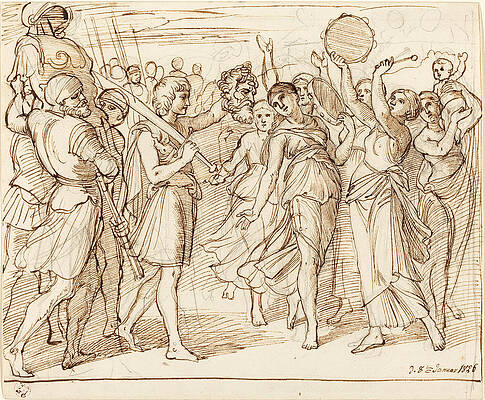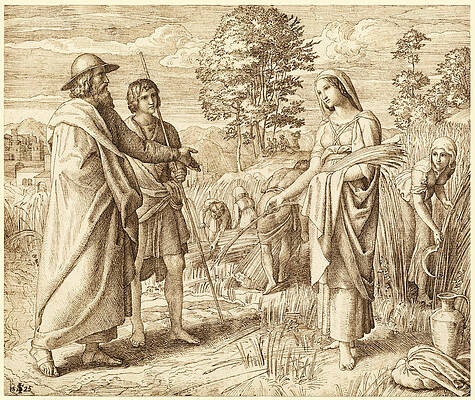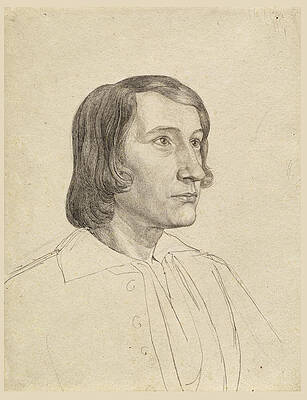Julius Schnorr von Carolsfeld
Paintings
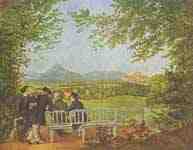
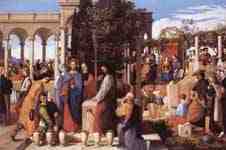
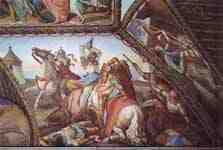
The six battle on the island Lipadusa
 The army of the Franks under Charlemagne in the city of Paris
The army of the Franks under Charlemagne in the city of Paris
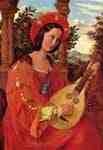
Portrait of woman Klara Bianka von Quandt with lute
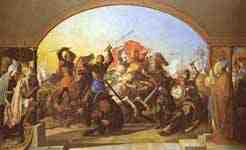
Six battle on the island Lipadusa
Drawings
Johann Evangelist Scheffer von Leonhardshoff
The Triumph of David
The Entrance of Charlemagne into Pavia
Ruth and Boaz
Gustav Heinrich Naeke

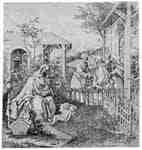
Visit of the parents of John to the parents of Jesus
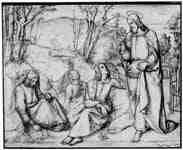
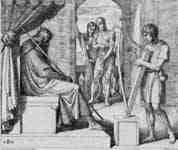


The three Marys at the tomb of Jesus

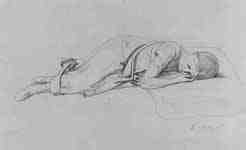

The Vigna of Arciprete in Olevano with mountain views
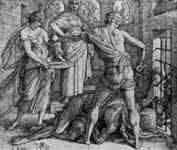
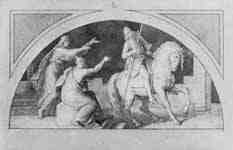
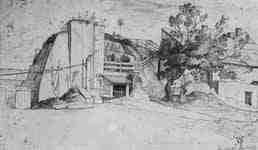
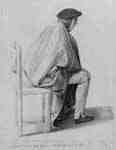
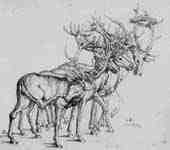

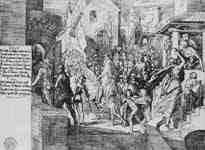
Charlemagne and the Frankish army
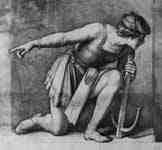
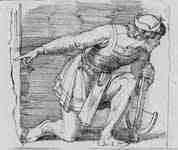
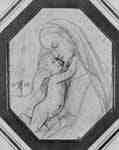
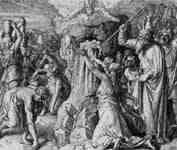
Moses Striking Water from the Rock

Near the church of S. Balbina in Rome
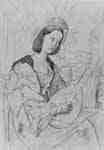
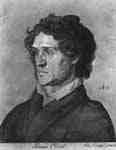
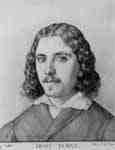
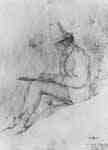
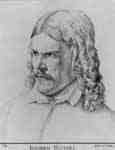
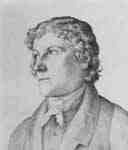
Portrait of Johann Cristoph Erhard
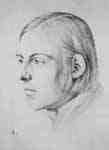



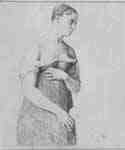
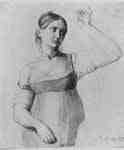


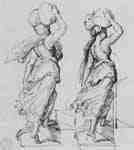

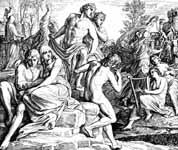
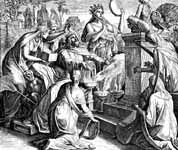
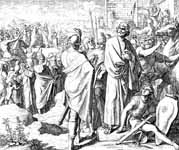
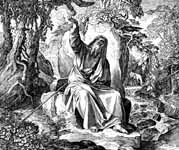
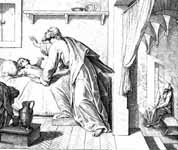
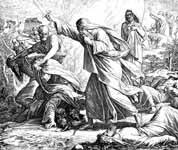
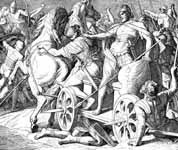
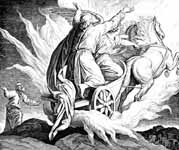
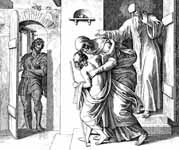
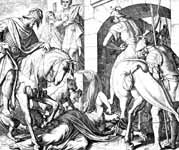
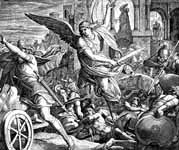
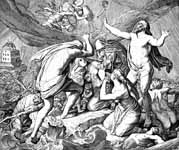





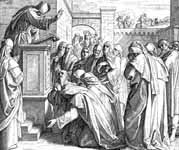
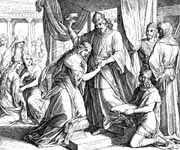
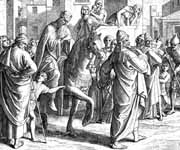
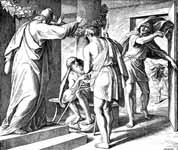
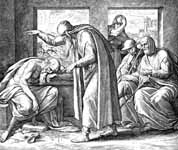
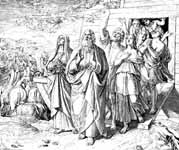

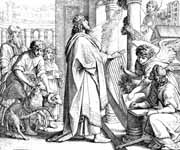

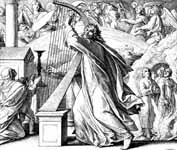
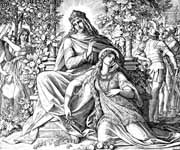
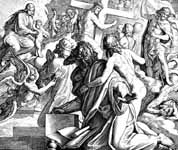

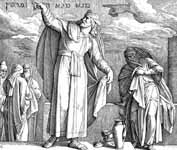
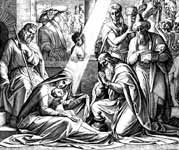

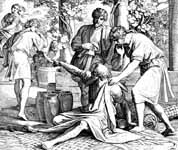
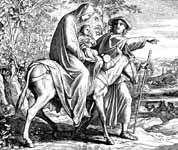
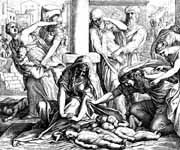
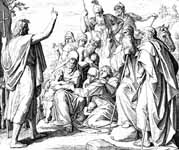



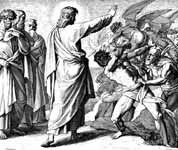

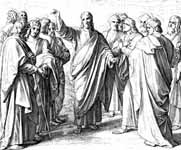
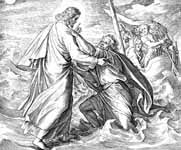
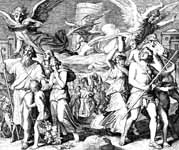
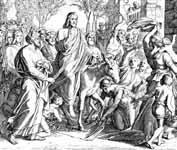
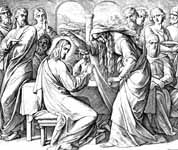

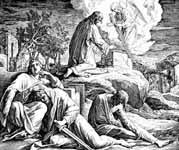
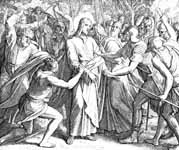
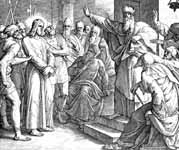
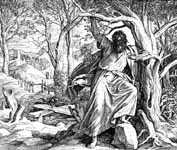
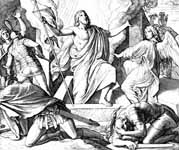
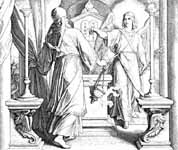
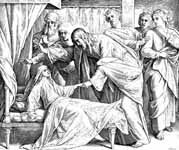
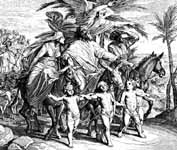


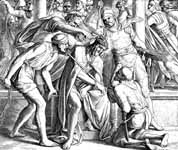

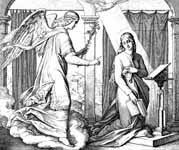
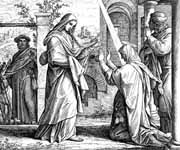

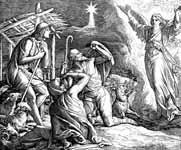
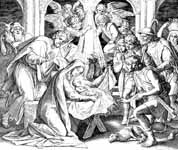


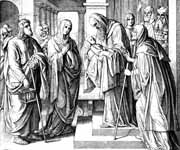
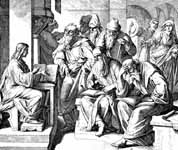
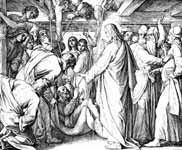


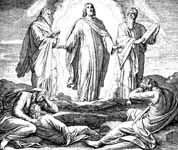
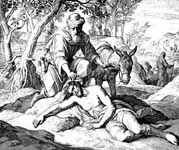
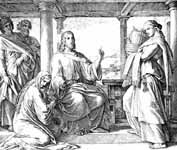
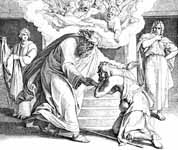
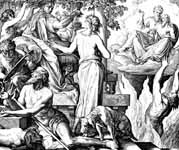
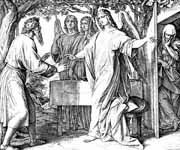

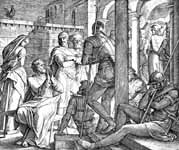
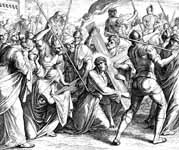
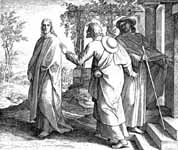

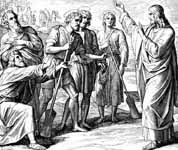
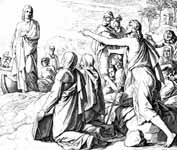
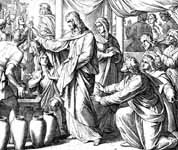
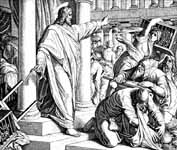
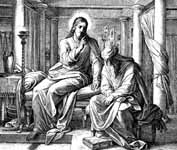

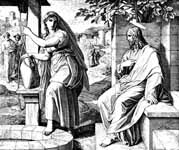
After Julius Schnorr von Carolsfeld
Abraham Sees The Promised Land According To Genesis 12 1-7
Julius Schnorr von Carolsfeld (26 March 1794 – 24 May 1872) was a German painter, associated with the Nazarene movement.
Biography
Early life
The Wedding at Cana (1820)
Schnorr was born in Leipzig, the son of Veit Hanns Schnorr von Carolsfeld [1] (1764–1841), a draughtsman, engraver and painter, from whom he received his initial artistic education.[2] his earliest known works being copies of the Neoclassical drawings of John Flaxman.[3]In 1811 he entered the Vienna Academy, from which Johann Friedrich Overbeck and others who rebelled against the old conventional style had been expelled about a year before.[2] There he studied under Friedrich Heinrich Füger, and became friends with Joseph Anton Koch and Heinrich Olivier, both of who would have an important influence on his style.[1]
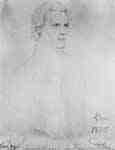
Portrait of Julius Schnorr von Carolsfeld, Joseph Ernst Tunner
Rome
Schnorr followed Overbeck and the other the founders of the Nazarene movement to Rome in 1815. This school of religious and romantic art tended to reject modern styles, attempting to revert to and revive the principles and practice of earlier periods.[2]At the beginning of his time in Rome, Schnorr was particularly influenced by his close study of fifteenth century Italian painting, especially the works of Fra Angelico. Soon however, he abandoned this refined simplicity, and began to look towards more elaborate High Renaissance models.[4] From its outset the Nazarene movement made an effort to recover fresco painting and monumental art, and Schnorr found opportunity of demonstrating his powers when commissioned to decorate the entrance hall of the Villa Massimo near the Lateran with frescoes illustrating the works of Ariosto. [2] Other cycles in the house were begun by Peter von Cornelius and Johann Friedrich Overbeck.[4]
Return to Germany
The second period of Schnorr's artistic output began in 1825, when he left Rome, settled in Munich, entered the service of Ludwig I of Bavaria, and transplanted to Germany the art of wall-painting which he had learned in Italy. He showed himself qualified as a sort of poet-painter to the Bavarian court; he organized a staff of trained executants, and covered five halls in the new palace – the "Residenz" – with frescoes illustrating the Nibelungenlied. He also painted a series of scenes from the lives of Charlemagne, Frederick Barbarossa and Rudolph of Habsburg.[2] Schnorr had initially wanted to create a complex symbolic programme in which these German historical subjects were combined with scenes from the Old Testament. This however was rejected by Ludwig, leaving Schnorr to complain that he was left with the task of painting a mere "newspaper report of the middle ages" ("Zeitungsartikel des Mittelalters").[3] Critics considered these compositions to be creative, learned in composition, masterly in drawing, but also exaggerated in thought and extravagant in style.[2][5][2]
Dresden
In 1846 Schnorr moved to Dresden to become a professor at the academy there. The next year he was appointed director of the Gemäldegalerie.[1]
Bible illustrations
"Saul Tries to Kill David"
Schnorr's third period was marked by his Biblical illustrations. He was a Lutheran, and took a broad and un-sectarian view.[2] His Picture Bible was published in Leipzig in 30 parts in 1852–60, and an English edition followed in 1861.[6]The Picture Bible illustrations were often complex and cluttered; some critics found them lacking in harmony of line and symmetry, judging them to be inferior to equivalent work produced by Raphael. His style differs from the simplicity and severity of earlier times, exhibiting instead the floridity of the later Renaissance.[2]
Stained glass design
Schnorr's biblical drawings and cartoons for frescoes formed a natural prelude to designs for church windows, and his renown in Germany secured commissions in Great Britain.[2] Schnorr was one of ten artists who provided designs for a scheme of stained-glass for Glasgow Cathedral, commissioned in 1856–7 and manufactured at the royal factory in Munich, and he later designed windows for St Paul's Cathedral in London.[2][7]This Munich glass provoked controversy: medievalists objected to its lack of lustre, and stigmatized the windows as mere coloured blinds and picture transparencies. The opposing party, however, claimed for these modern revivals "the union of the severe and excellent drawing of early Florentine oil-paintings with the colouring and arrangement of the glass-paintings of the latter half of the 16th century."[2] Four windows by Schnorr were installed at St Paul's: three in the chancel (removed in 1888) and one at the west end (destroyed in 1941).[6] Most of the Munich glass at Glasgow was removed during the 20th century.[7]
Death
Schnorr died in Munich in 1872.[2]
Family
Schnorr married Maria Heller, the stepdaughter of Ferdinand Olivier, in 1827.[1] Their son Ludwig Schnorr von Carolsfeld was an operatic tenor who died at the age of 29. He had just begun to gain renown as the first to sing Wagner's Tristan. Schnorr's brother, Ludwig Ferdinand (de) (1788–1853) was also a painter.
Notes
Artist biography in German Masters of the Nineteenth Century, pp.272–3
Encyclopædia Britannica, 1911
Gossman, Lionel (2003). "Unwilling Moderns: The Nazarene Painters of the Nineteenth Century". Nineteenth-Century Art Worldwide. Retrieved 25 February 2013.
Schiff, Gert, "An Epoch of longing" in German Masters of the Nineteenth Century, p.18
See also The Burlington Magazine, vol. 101, No. 676/677 (July/August 1959) "The Romantic Exhibition" by Kenneth Garlick
"drawing [Christ's Ascension on the Mount of Olives, design for stained glass window]". British Museum. Retrieved 22 August 2014.
"Glasgow Cathedral St Mungo's". Science on Streets. Retrieved 22 August 2014.
References
This article incorporates text from a publication now in the public domain: Chisholm, Hugh, ed. (1911). "Schnorr von Karolsfeld, Julius". Encyclopædia Britannica (11th ed.). Cambridge University Press.
German masters of the nineteenth century: paintings and drawings from the Federal Republic of Germany, a full text exhibition catalogue from The Metropolitan Museum of Art, which contains material on Julius Schnorr von Carolsfeld (no. 76-78)
----
Fine Art Prints | Greeting Cards | Phone Cases | Lifestyle | Face Masks | Men's , Women' Apparel | Home Decor | jigsaw puzzles | Notebooks | Tapestries | ...
----
Artist
A - B - C - D - E - F - G - H - I - J - K - L - M -
N - O - P - Q - R - S - T - U - V - W - X - Y - Z
Retrieved from "http://en.wikipedia.org/"
All text is available under the terms of the GNU Free Documentation License




